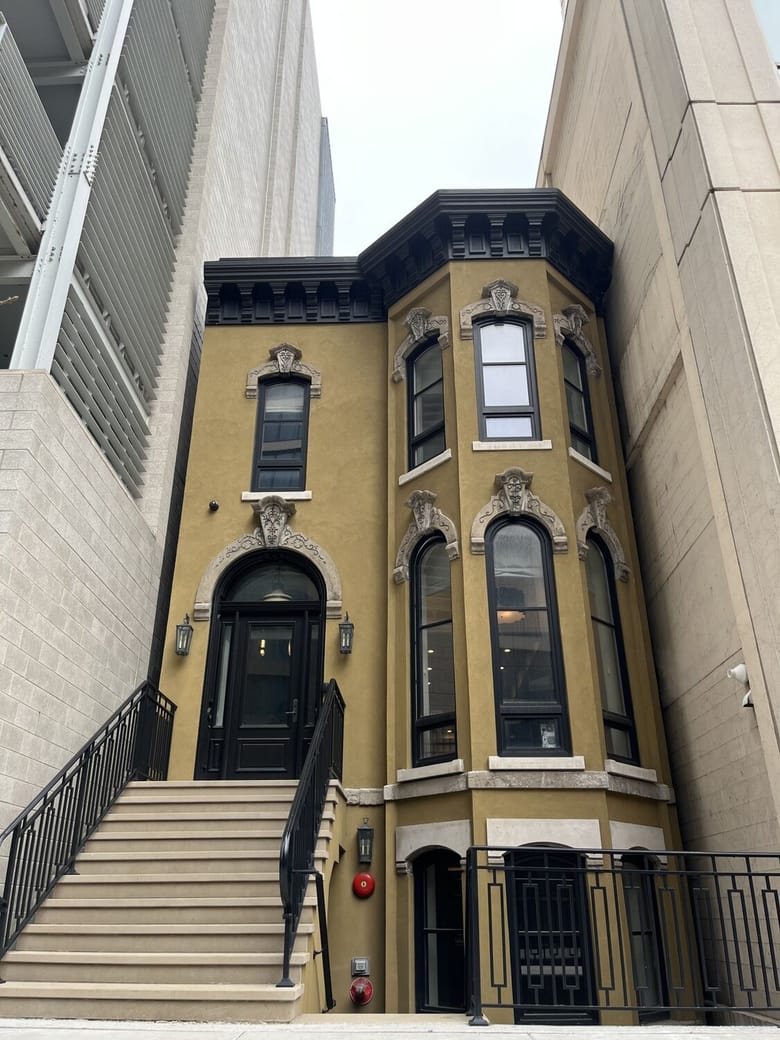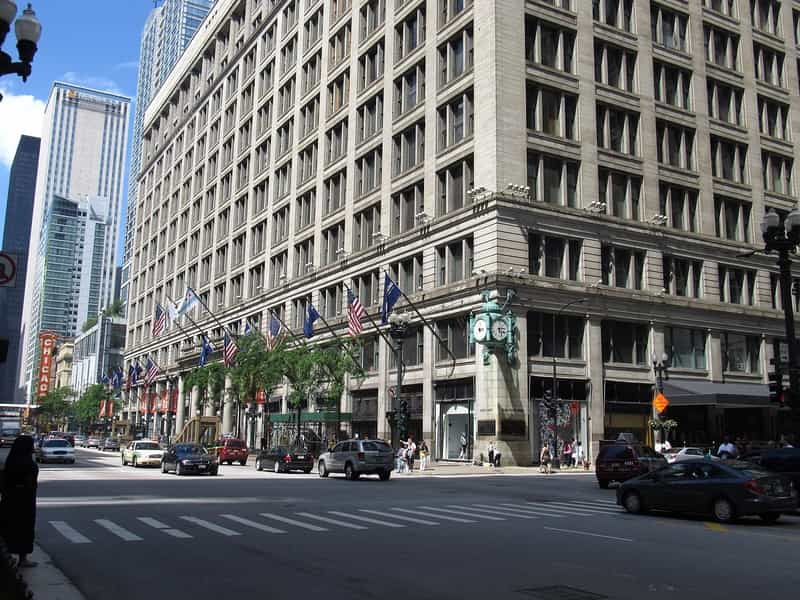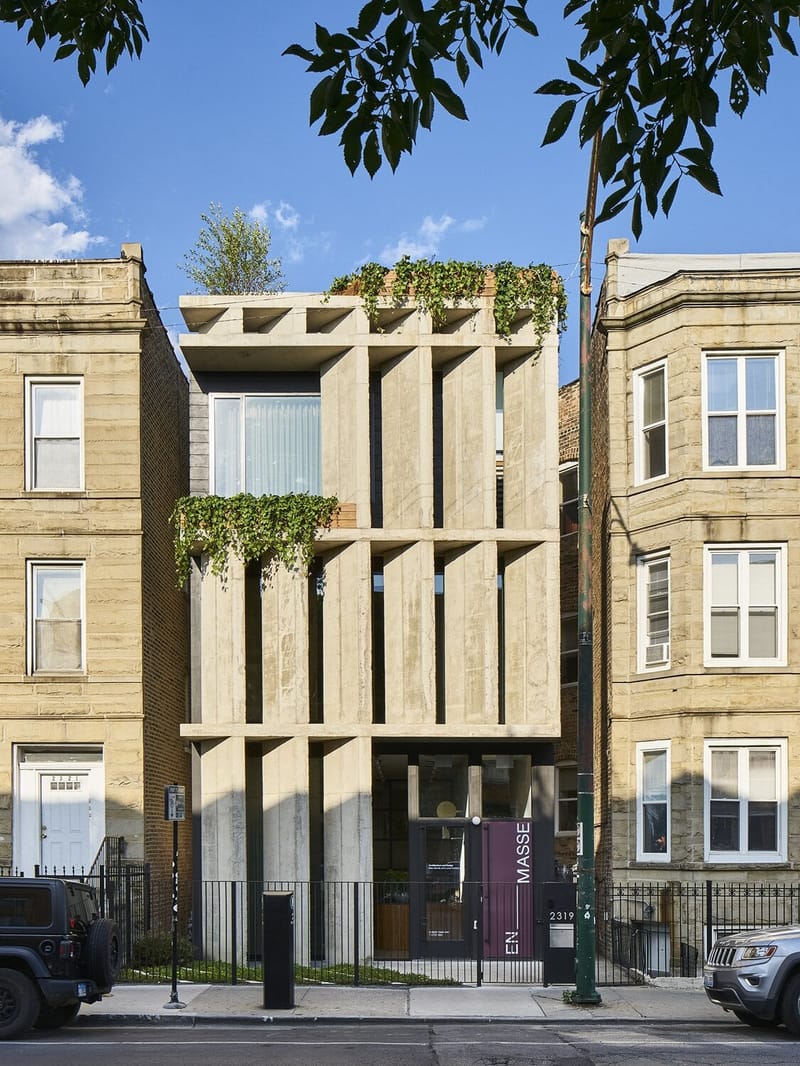Keystone
Photo: 154 W. Superior Architect: Unknown
A Keystone refers to the central, wedge-shaped stone at the apex of an arch or vault. This crucial element locks all the other stones (voussoirs) into position. The keystone is often the final piece placed during construction, and its insertion allows the arch to support itself and any loads above it. It is not only a structural necessity but also often a decorative focal point in architectural design.
The use of keystones dates back to ancient civilizations, including the Egyptians, Greeks and particularly the Romans, who mastered the use of arches and vaults in their architecture. The wedge-shaped design of the keystone, with its narrower end pointing downward and the broader end at the top, ensures that it distributes weight evenly across the arch. As the final piece placed in an arch, the keystone exerts pressure on the voussoirs, pushing them outwards and down, which locks the entire structure into place.
While the keystone remains a fundamental element in the design of arches and vaults, it can also be decorative, serving as a symbolic focal point, enhancing the aesthetic appeal of buildings.























